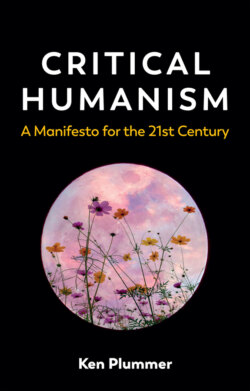Читать книгу Critical Humanism - Ken Plummer - Страница 13
Notes
Оглавление1 1 I have provided a short account of my illness in ‘My Multiple Sick Bodies: Symbolic Interactionism, Autoethnography and Embodiment’, in Bryan S. Turner, ed., Routledge Handbook of Body Studies (Routledge, 2012), pp. 75–93.
2 2 In a short space of time there has already been a mad rush of publications about Covid-19. Everything is in flux, but one early useful book is Fareed Zakaria, Ten Lessons for a Post-Pandemic World (Allen Lane, 2020).
3 3 See Zygmunt Bauman, Liquid Modernity (Polity, 2000). Bauman has written many works on this theme, including Liquid Love: On the Frailty of Human Bonds (Polity, 2003), Liquid Fear (Polity, 2006) and, with David Lyon, Liquid Surveillance: A Conversation (Polity, 2013).
4 4 I use the word ‘pluriverse’ a lot in this book and it may not be familiar. It has three genealogies. First, William James wrote of the plural experience and ‘the pluralistic universe’ (see A Pluralistic Universe, CreateSpace Publishing, 2015 [1909]). He suggested a world of human multiplicities. Second, the term ‘multiverse’ is used by physicists to claim that the universe is not one but multiple. And third, it has been used recently to capture diversity in world politics, developed in the works of Arturo Escobar in Pluriversal Politics: The Real and the Possible (Duke University Press, 2020). These are not incompatible. The challenge is to think in the local and specific diversity, to see worlds in the plural.
5 5 It is present in my Documents of Life: Introduction to the Problems and Literature of a Humanist Method (Allen & Unwin, 1983); but I make it much more apparent in the major revised second edition: Documents of Life-2: An Invitation to a Critical Humanism (Sage, 2001). I expand on it in several other works: for example, Cosmopolitan Sexualities: Hope and the Humanist Imagination (Polity, 2015), Narrative Power: The Struggle for Human Value (Polity, 2019) and ‘A Manifesto for a Critical Humanism in Sociology’, in Daniel Nehring, Sociology: An Introductory Textbook and Reader (Pearson Education, 2013), pp. 489–516.
6 6 Anne Phillips, The Politics of the Human (Cambridge University Press, 2015), pp. 14–15.
7 7 As well as the discussion in Phillips’s Politics of the Human, see discussions in Yuval Noah Harari, Sapiens: A Brief History of Humankind (Vintage, 2011) and Homo Deus: A Brief History of Tomorrow (Vintage Books, 2015); Siep Stuurman, The Invention of Humanity: Equality and Cultural Difference in World History (Harvard University Press, 2017); Alexander Harcourt, Humankind: How Biology and Geography Shape Human Diversity (Pegasus, 2015); John Hands, Cosmo Sapiens: Human Evolution from the Origin of the Universe (Duckworth, 2015); and Bruce Mazlish, The Idea of Humanity in a Global Era (Palgrave Macmillan, 2009).
8 8 Trees account for some 82 per cent of biomass; tiny bacteria some 13 per cent; we humans account for a mere 0.01 per cent. For a summary of these ideas, see https://www.theguardian.com/environment/2018/may/21/human-race-just-001-of-all-life-but-has-destroyed-over-80-of-wild-mammals-study. The original study can be found at: Yinon M. Bar-On, Rob Phillips and Ron Milo, ‘The Biomass Distribution on Earth’, Proceedings of the National Academy of Sciences, 115/25 (19 June 2018): 6506–11: https://www.pnas.org/content/115/25/6506/tab-article-info.
9 9 Discussions of the ‘person’ raise many issues – especially concerning dignity and agency. It corresponds roughly to what I will refer to as existential being, but I do not discuss it here. An important clarification is to be found in Christian Smith, What Is a Person? Rethinking Humanity, Social Life, and the Moral Good from the Person Up (University of Chicago Press, 2011). See also Margaret Archer, Being Human: The Problem of Agency (Cambridge University Press, 2000).
